Sales Conversion Secrets: How to Double Your Sales Without Spending More on Ads
Published Date: |
Updated Date:
If you’re selling digital products or perhaps provide online coaching, nothing beats the feeling of being able to close a sale. Your marketing goal should be geared towards converting traffic to leads, convert with “Entry-Point Offers” and to make your core offer.
For those building an online content, coaching or consulting business – or any type of online business for that matter – one thing we can all agree on is that nothing else matters like money in the bank!
In the process of attracting a constant flow of new and paying customers/clients, there are several steps that must be taken to ultimately arrive at the point of a “SALE.”
What does your sales conversion process look like now?
What is your current conversion rate?
What are you working on right now to increase it…DOUBLE it?
In this article, we’ll uncover one of the best kept sales conversion secrets that separate the big-profit online players from the small-profit ones – entry point offers.
Let’s Start At the Top…
If we think of your sales and marketing activities online as a funnel, then you can picture dumping your ideal prospects into that funnel, starting at the top.
Translating this to internet marketing terms, there are lots of activities that you perform, or should be performing, to get people coming into the top of your funnel.
Take a second to consider all the activities that are performed to acquire a new customer.
Facebook Ads, social media posting, commenting, and networking, podcasting and all the production that comes with that, vlogging and all of its production, blogging, syndication and more.
All of these above-mentioned deliverables are items used to reach the goal of raising maximum AWARENESS about you and your business.
At this stage of the relationship with your targeted audience, the temperature of your audience is considered ‘COLD.’
These people are out on social media, doing Google searches, browsing videos on YouTube or podcasts on iTunes and come across some of your content that’s posted on these platforms.
This graphic displays some of the most popular forms of content used to raise awareness…
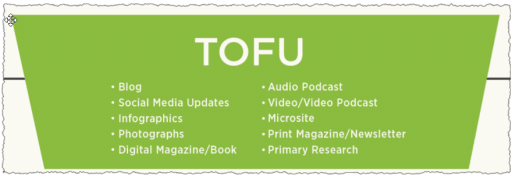
If done well, all of this work should produce an ever-increasing amount of TRAFFIC.
These people may tune in and consume a piece of your free, ungated content, and they may end up on your site, comprising your site TRAFFIC, but the vast majority of these people are NOT ready to buy from you…yet!
If you are consistently producing, publishing and syndicating 1, 2, 3 or more of the above-mentioned forms of content, your traffic should increase as it directly correlates to your content sharing efforts.
More Traffic Equal More Sales?
One would think that sales will naturally increase proportionately to traffic gains.
This is true for many, but the question becomes, “how many sales per thousand unique visitors are we talking?”
Across industries, the average landing page conversion rate was 2.35%, yet the top 25% are converting at 5.31% or higher. Ideally, you want to break into the top 10% — these are the landing pages with conversion rates of 11.45% or higher. – WordStream
But do you realize that converting at a 5.31% conversion rate more than DOUBLES your sales without working any harder?
In other words, if your 2.35% conversion rate means you make about $4,000 a month in net profit, at 5.31% you’re raking in over 9,038 a month – or a six-figure income?!?
If you’re generating traffic with paid ads, this means that your cost per acquisition is cut in half and if you’re using content marketing to generate traffic, then you don’t have to work any harder to double your sales.
This could mean the difference of you going from internet moonlighter to making more money, quitting your day-job, working from anywhere you want, and living your dream life!
Come on, I don’t have to sell the fact that DOUBLE the sales and profits is better, you get it.
A Closer Look…
So, at this point, you have to be asking yourself, “What are the top 25% doing to convert over double what the average internet business is doing?”
That top tier of online business operators are likely paying a lot closer attention to how they convert website traffic into happy, paying customers.
There are people who have 100,000+ followers on Facebook and 10,000 email subscribers but still don’t generate enough profits from their online operations to make a six-figure income. Madness!
If you follow the secret formula I’m about to reveal, you should be able to boost your conversion rates, which means bringing in more sales and profits without having to increase ad spend or traffic.
The goal of your marketing must be to establish a systematic, well-oiled machine that predictably allows you to acquire new customers and generate more sales and profits from current customers.
The challenge is that people are skeptical about you, indifferent towards your offers and are too busy and distracted to zone in on slight distinctions that give your offer unique value in the marketplace.
That’s why you can offer the real ‘fountain of youth’ to an older audience and not convert more without having the right sales conversion strategy.
3 Step Conversion Strategy
Let’s break the conversion process down into bite sized steps.
Step 1: Convert Traffic to Leads
When people visit your website or landing page they are following the bread crumb trail you’ve laid, and hopefully it’s a good one.
The number one reason people will visit your site is to consume targeted, high-value, ungated content such as a good blog post, video, white-paper, audio or some other form of content.
When they land there, you should be doing two things.
The first thing you should do is ‘pixel’ these visitors with your Facebook pixel code. That way you are building a custom audience of people who have visited your website.
The next thing you should do is seek to ‘capture’ these visitors as leads.
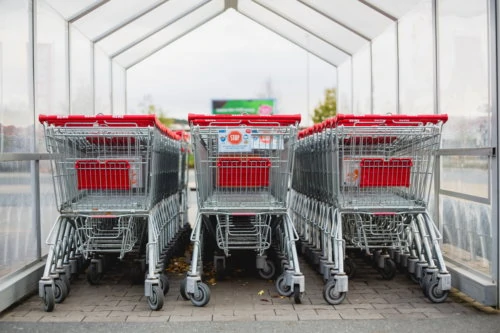
DID YOU KNOW…
Smart marketers know that at least 97% of the people, if not more, will NOT buy on the first visit to their website, so taking this into consideration, they seek to capture leads from their traffic to have the opportunity to take the relationship to the next level.
This job is done by making a free offer, called ‘lead magnets’, where something of relevant value is offered by simply filling in your name and email address.
Good lead magnets vary from industry to industry, and may include:
These lead magnet offers should be made on any possible page you expect traffic to come in on – particularly free content, value pages – such as juicy blog post pages.
After reading a good blog post on a popular marketer’s website, https://neilpatel.com, I attempted to leave the page, and BOOM…was hit with a ‘pop-out’ offer, as you see in the image below…
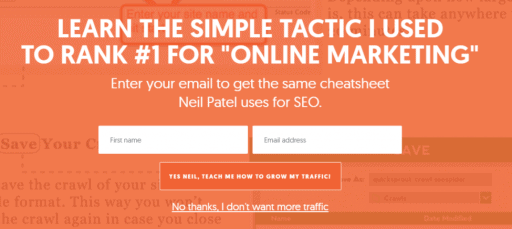
The lead magnet offer you make should, ideally, be relevant to the blog post or content they are consuming.
For instance, if your blog post is about how to lose 10 lbs. with running, you might offer a lead magnet that’s a 10-day running challenge that burns 1,000 calories a day in 60 minutes.
Step 2: Convert With ‘Entry-Point Offers’
Once a person fills in their email address and name, you have an option of where you want to send these ‘new leads’. Most people either let them remain on the same page or send them to a ‘Thank You’ page.
Of those who send their new subscribers to Thank You pages, most simply say ‘Thank You!’ and let them go.
Big mistake!
When you get a new lead, momentum is shifting in the relationship, making it a pivotal time for you to close the first sale.
The ‘temperature’ of the relationship shifts from COLD to WARM, making it a great time to attempt to go further.
The ideal next step is called an ‘Entry-Point-Offer’.
Entry Point Offers – this is where you transform the relationship from that of prospect to customer – this is where you convert and make money! Making the first sale is the gift that keeps on giving, because once a person becomes a buyer, even if they bought something small, their psychology has shifted dramatically. So, your goal is to get them to buy something, anything…well, not ‘any’ thing, but you get the point!

Even if you lose money, it’s worth it to get the first sale going.
You see, when you take a website visitor from merely consuming your free content to pulling out their wallet, their psychological mindset has shifted from “I don’t know about these guys…” to “these guys sound like exactly what I need…”.
An entry-point-offer is perfect because it allows people to try you out for a low price. It only makes sense that more first-time buyers will try a $7 offer than a $200 offer.
There’s no hard rule for the price point of your entry-point offer as it depends on your industry and business model. A $500 entry-point offer that leads to a mid-five figure product is fair game.
So by offering that low priced offer, you get an increased number of prospects to CONVERT to new customers, and once this happens, that higher-priced sell – your core/flagship offer – is far easier to make.
To make the point, I’ll share a fun little story a friend shared with me.
My friend told me about a new frozen yogurt shop that opened up in the Galleria shopping mall close to his home and how they sent coupons in the mail offering a ‘free small fro-yo.’
Being a lover of fro-yo, he just couldn’t pass this FREE offer up!
He went to their ice-cream shop in the Galleria and brought his coupon. Mouth watering for some cold and refreshing fro-yo, the cashier gave him his free ‘cup.’
This ‘cup’ was so small, it was more of a thimble than a cup!
The actual ‘cup’ was pretty darn close to the size of the ‘cup’ displayed in the 3×2 clip ad he carried with him to their shop, he exclaimed.
However, he was there, so he asked for a bigger cup and enjoyed some refreshing fro-yo.
This was a hilarious experience but we can get some good take-aways from this.
First, making free offers works like gangbusters. So, offer something for free or low cost, that’s related in some way to your ‘core offer’.
Once he was in the fro-yo store expecting a cool treat, psychologically, there was no way he was going to turn back, so he whipped out his wallet and plopped down some cash for a larger serving of a cold treat.
A paid offer example would be the $79 diagnostic or the discounted oil change you get from the car repair shop. They’re brilliant at this.
You go in with your coupon for a $19 oil change and you walk out with a $350 bill and a smile – after all, you’re just glad the darn thing hadn’t blown up on the highway already!
Seriously though, they will change your oil for a low price, but they’ll also check all the other fluids and air filters in your car and show you all the problems you’re past-due on fixing. Nobody wants to breath in dirty air, so you have the filters changed…finally!
So, what they lose on the front-end, they easily make up on the back-end when, as it turns out, you’re 10,000 miles past-due on a tune-up and if you don’t get it done TODAY…your car will probably blow up on the highway on the way home.
“That’ll be $400, please!”
Offering a low-priced item, an impulse-buy, is a great way to install an Entry-Point-Offer into your business.
If you’re trying to sell people into your $97 monthly digital content library, you might select one of your most popular mini-courses in your library and offer that single mini-course for a low-price of $7 or $10, $10 or a one-time $97. Once they have bought this offer, you may offer them a $1 trial of your entire library for 30 days.
Or, you may offer a live premium training class for $27 where you walk them through a valuable task. At the end of it, you could offer these buyers membership into your $297 monthly coaching program.
Entry-Point-Offers are the best bridge to converting new leads into new customers.
Step 3: Make Your Core Offer
We’ve already discussed this in the previous section, but I’ll expound here for clarity.
Once a person takes the Entry-Point-Offer, it’s time for you to attempt to close a bigger sale.
That free yogurt, half-priced cheeseburger, cheap oil change, or those colorful and fluffy socks Old Navy sells every year at Christmas time always get people into the store and opening up the wallet.
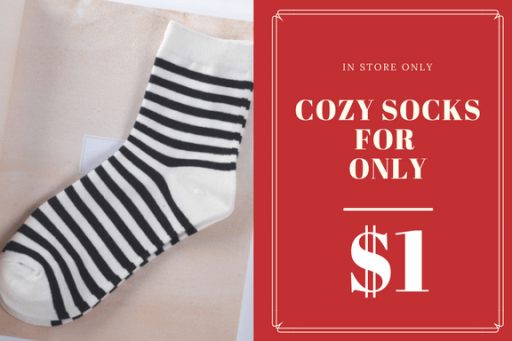
So, once you’ve got your new leads to trust you by taking you up on a low-priced Entry-Point-Offer, then it’s time to attempt to close a bigger sale. You do this with your Core Offer.
When you walk into Old Navy to grab 10 pairs of those adorable fuzzy socks to give away at Christmas time, you also see higher priced sales on pants, shirts, two-piece outfits, and coats that you simply can’t miss.
So, you walked in only intending to purchase socks but they knew you’d walk out with 5 bags of clothes…and 10 new pairs of silly socks too!
They may breakeven or lose money of these entry point offers but they put them out as bait to attract the crowds into the store, knowing that people will purchase far more than the loss-leader silly socks.
If you’ve assembled your free content, lead magnet and Entry-Point-Offer well, then your ‘Core’ offer should only be a natural next step at this point in their journey to becoming a new customer.
Entry point offers are the perfect bridge that compels leads to convert to customers of your core offers and flagship offers.
By bridging the gap between new leads and your core offers with entry-point-offers, you easily increase conversion rates without necessarily needing more traffic.< Implemented well, entry point offers should help you increase, perhaps, even double your conversions without increasing traffic to your site.

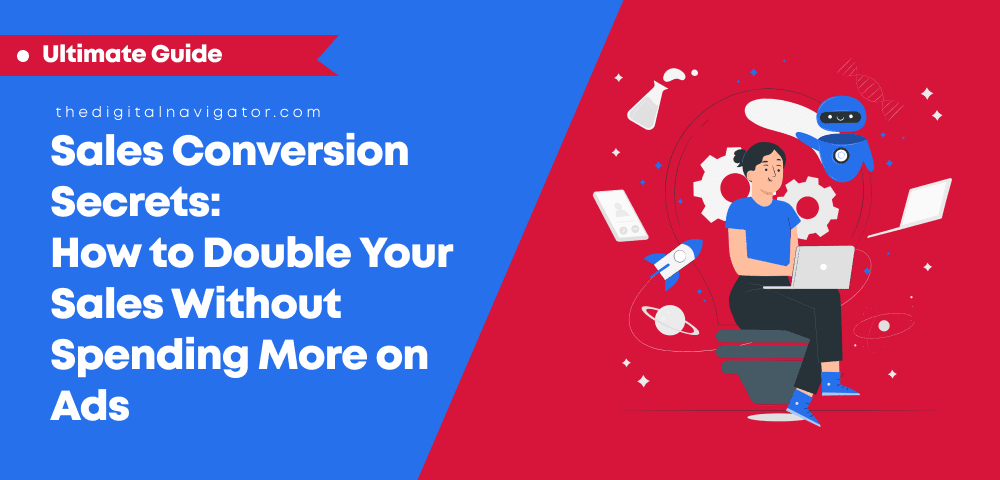




0 Comments